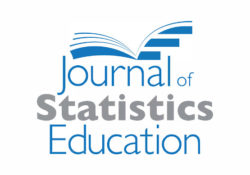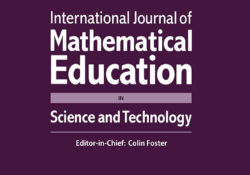tandfonline.com har udgivet en rapport under søgningen “Teacher Education Mathematics”: Three Extensions of the Random Intercept Cross-Lagged Panel Model Link til kilde
Like this:
Like Loading...
tandfonline.com har udgivet en rapport under søgningen “Teacher Education Mathematics”: Abstract Abstract Informally testing the fit of a probability distribution model is educationally a desirable precursor to formal methods for senior secondary school students. Limited research on how to teach such an informal approach, lack of statistically sound criteria to enable drawing of conclusions, as well as New Zealand assessment requirements led to this study. Focusing on the Poisson distribution, the criteria used by ten Grade 12 teachers for informally testing the fit of a probability distribution model was investigated using an online task-based interview procedure. It was found that criteria currently used by the teachers were unreliable as they could not correctly assess model fit, in particular, sample size was not taken into account. The teachers then used an… Continue Reading →
Like this:
Like Loading...
tandfonline.com har udgivet en rapport under søgningen “Teacher Education Mathematics”: ABSTRACT ABSTRACT Most often, flipped classroom approaches in science and mathematics classrooms follow a traditional approach to teaching, where students receive direct instruction as homework and have to apply and deepen their knowledge in a follow-up lesson. Little is known about the arrangements of in-class and out-of-class phases fostering learning through inquiry in flipped classroom scenarios. To support teachers’ lesson planning practices, we developed a design heuristic for flipped classroom scenarios based on the 5E inquiry model. We implemented this design heuristic in an online professional development course for secondary mathematics teachers and collected 18 lesson plans. To explore how participating teachers adopted the design heuristic in their lesson plans, we conducted a document analysis on our data. We identified… Continue Reading →
Like this:
Like Loading...
eric.ed.gov har udgivet: The purpose of this study was to investigate a new methodology for detection of differences in middle grades students’ math anxiety. A mixture partial credit model analysis revealed two distinct latent classes based on homogeneities in response patterns within each latent class. Students in Class 1 had less anxiety about apprehension of math lessons and use of mathematics in daily life, and more self-efficacy for mathematics than students in Class 2. Moreover, students in Class 1 were found to be more successful in mathematics, mostly like mathematics and mathematics teachers, and have better educated mothers in comparison to students in Class 2. However, gender, attending private or public schools, and education levels of fathers did not appear to differ between the classes. Capturing such fine-grained information extends… Continue Reading →
Like this:
Like Loading...


